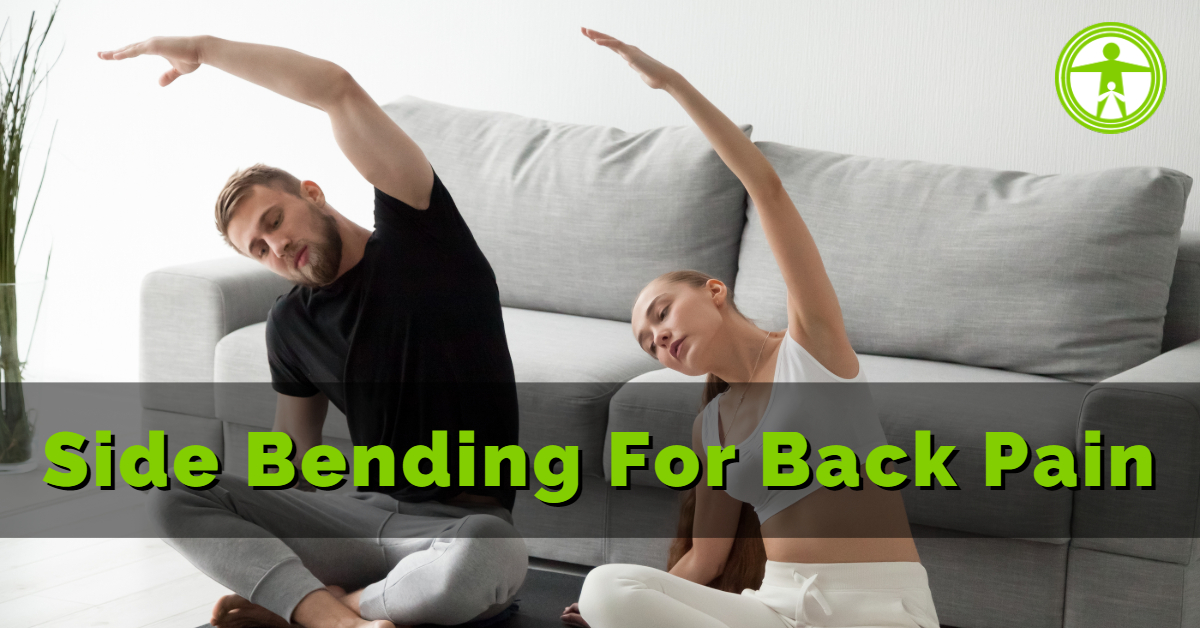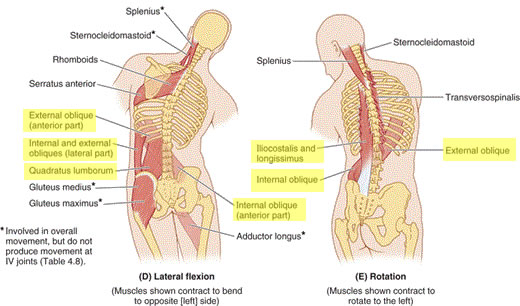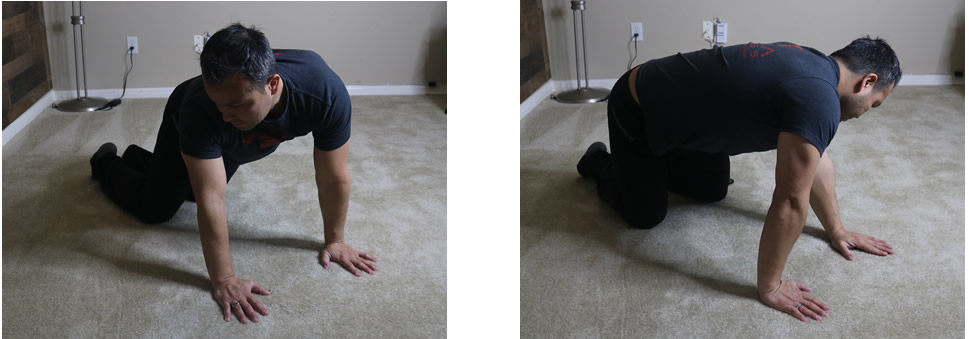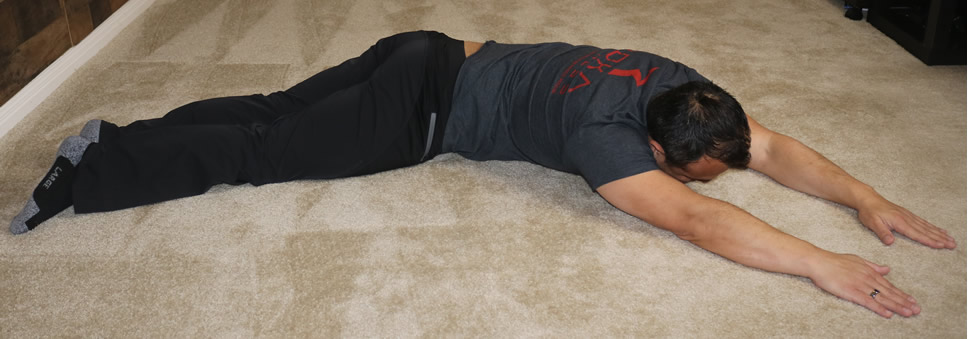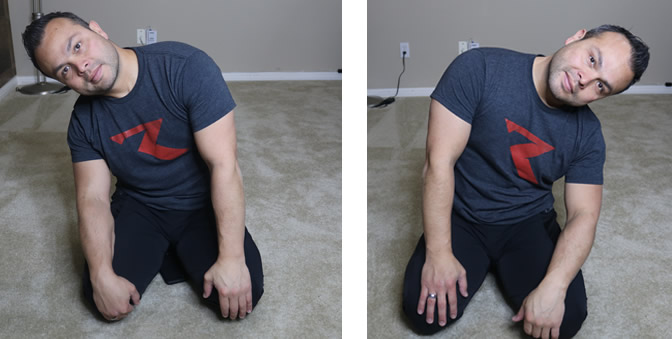Lateral Bending Can Help With Back Pain
Over the last few weeks I've discussed low back spine extension and flexion exercises for back pain.
While extension (back bending) is one of the best exercises you can do for low back pain, the reality is… all movements are important.
As a general rule… you only want to move the joints you want to keep.
And the sad truth is, most people don't move their spine in the extension and flexion positions, much less side bending or rotation.
If you back pain, side bending (also known as lateral flexion) exercises should not be left out.
This is why it's the third movement in my 6 minute mobility drill.
Lateral flexion (also known as side bending) is a movement that is rarely used in our day-to-day activities, yet it plays a central role in activating and releasing muscles responsible for all sorts of back problems.
This is because side bends help to improve lumbo-pelvic stability.
An unstable lumbo-pelvic area will lead to acute lower back injury, sharp lower back pain, spinal disc degeneration or even knee pain issues as the force from the feet is unable to travel up the whole spine.
A deep side bend helps to open up the sides of your ribs, thereby allowing you to breathe deeper into the lower lobes of the lungs instead of shallow breathing. S
Shallow breathing not only contributes to tight low back muscles, but it also creates tension in the neck and shoulders.
In this article I want to share with you why you should perform daily side bending exercises for optimal spine health and especially the treatment of back pain.
Muscles Involved in Side Bending
The primary muscles involved in side bending include:
- External Obliques
- Internal Obliques
- Quadratus Lumborum
- Erector Spinae
First, let's go over the Erector Spinae. This is a group of muscles that extends vertically up the length of your back, and are involved in both lside bending (lateral flexion) and back extension.
Weakness or tightness in the Erector Spinae can cause the Quadratus Lumborum (QL muscle) to pick up the slack, resulting in back pain that is on the side of your low back as opposed to the center.
If left untreated in the long run, even shoulder pain can occur due to tightness in the QL, erector spinae and obliques.
Our body will always do it's best to get you into certain positions.
And this is where problems can arise. If you have not been properly training or conditioning a set of muscles, then when you move in a certain way you can sustain an injury.
More often than not, low back injuries or neck injuries are not due to muscles being overworked, but because they are weak and untrained!
In fact, the overworked muscle is often the stronger muscle.
If you push the stronger and painful muscle to work further, it will lead to injury or a total breakdown (sprain or tear) – so that it do not need to work anymore (same goes for our mind!).
Hence, to relieve any painful muscle, you have to train the weaker muscle to start working to reduce load on the painful (and stronger) muscle.
Once the weaker muscles tone up and share the load, the stronger and painful muscle will learn to work less and the ache will naturally go away!
How Side Bending Can Help Back Pain
Side bending not only helps to hydrate the spinal discs, but it stretches and stabilizes the lumbo-pelvic area and relieve issues such as
1) in your lower back that may lead to lower back pain and even shoulder dysfunctions.
2) Acute lower back injury (eg some people can sprain their lower back with just a hard sneeze!)
3) Chronic lower back pain or pain that is always there but cannot be diagnosed with an MRI or Xray.
4) Accelerate spinal disc degeneration. An unstable lumbo-pelvic area means an unstable spine and you may be excessively moving only particular vertebrae thereby causing premature spinal disc degeneration. A stable lumbo-pelvic area will use the whole spine to perform the movement instead of only a few specific vertebrae
5) Knee pains – when the force from the ground (as you walk or jog) travels upwards from feet to ankles to knees to lower back and get “stuck” at the lower back area due to unstable jumbo-pelvic area, the force shoots right back to the knee instead of being cushioned by vertebrae of the entire spine. This is usually described as knee pain after a jog. If the jumbo-pelvic area is stable, the force travels up from lower back and cushioned up all the way to the upper back, thereby reducing pressure on any particular joint.
Side Bending Exercises
Cat-Cow Side Bending
The safest place to start side bending exercises is on all fours.
This position can give you the greatest control over your body and eliminates gravity from compressing your spine.
This is also why the third movement I practice every morning is the Cat-Cow Side Bend movement.
If you find that this movement causes pain, then consider the following modification.
Prone Side Bending
With this modification you simply lay flat on the ground, face down and your arms resting overhead.
Slide the top part of your body to one side and bring the lower part towards the same side creating a bend.
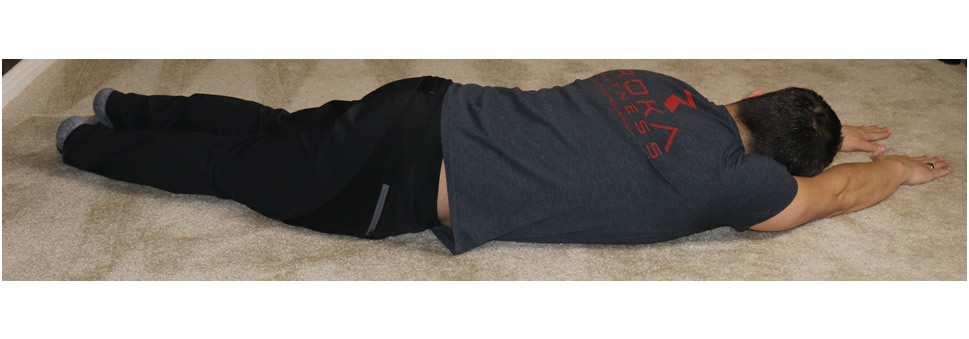
Sitting/Standing Side Bending
If you don't have any problems side bending and your back pain is not severe, then simply standing or sitting down and side bending is another option.
Final Thoughts
I know there are literally thousands of stretches you can find on the interwebs, and it can be confusing to know how to do them safely, especially since most stretching or recovery movements on the market is poor, at best.
Here's the deal: no matter how “tight” you may be, there's a lot you can be doing to improve your range of motion, joint health, flexibilty and when paired with chiropractic adjustments – improved overall health.

